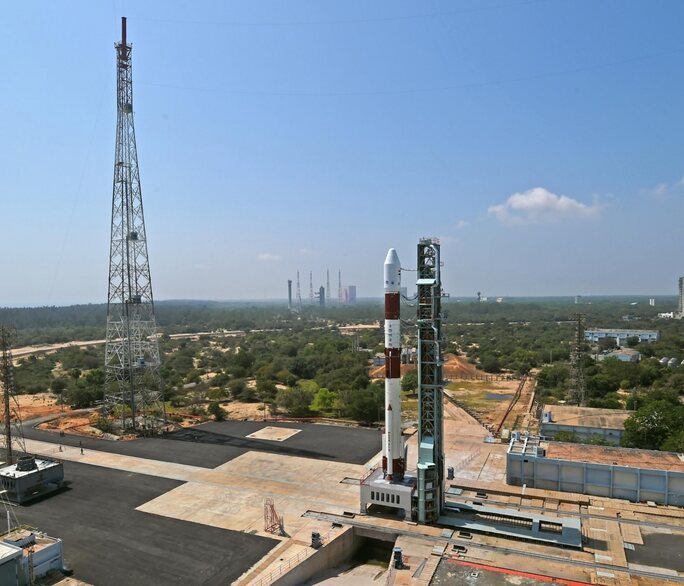

ISRO launches Amazonia-1
<p>
Indian Space Research Organisation (ISRO) successfully launched a Brazilian satellite from the Sriharikota spaceport in Andhra Pradesh on Sunday reflecting the strengthening relations with the Latin American country. The take-off of the Indian rocket with the Brazilian remote sensing satellite as the primary payload also formed the first ISRO launch mission of 2021.</p>
<p>
&ldquo;In this mission, India and ISRO, feel extremely proud to launch the first satellite designed, integrated by Brazil. The satellite is in very good health. I congratulate the Brazilian team,&rdquo; ISRO Chief K Sivan said.</p>
<p>
The remote sensing satellite will be used to monitor deforestation in the Amazonian rain forest. The launch marks growing ties between India and Brazil–two rapidly evolving emerging economies. The two countries have recently scaled up their relationship after India sent in large supplies of Covid-19 vaccines to the Latin American heavyweight.</p>
<p>
PSLV-C51 rocket, which is the 53rd mission of PSLV (Polar Satellite Launch Vehicle), also launched 18 co-passenger payloads along with the satellite.</p>
<p>
The blast-off was scheduled at 10.24 hours from Satish Dhawan Space Centre, Sriharikota, where the countdown commenced at 08.54 hours on Saturday for the PSLV-C51/Amazonia-1 mission.</p>
<p>
These co-passenger satellites include Satish Dhawan Sat (SD SAT) from Chennai-based Space Kidz India (SKI). A photo of Prime Minister Narendra Modi has been engraved on the top panel of this spacecraft.</p>
<p>
&ldquo;This is to show solidarity and gratitude for his (PM&rsquo;s) Aatmanirbhar initiative and space privatisation,&rdquo; SKI said in a statement.&nbsp; It has also sent up the holy &ldquo;Bhagavad Gita&rdquo; in secured digital card.</p>
<p>
The PSLV-C51 rocket will place the satellite along with 18 others in the sun-synchronous orbits, which is especially useful for the placement of&nbsp; imaging, spy, and weather satellites.</p>
<p>
The live telecast of the launch was available on ISRO website, YouTube, Facebook and Twitter channels.</p>
<p>
The PSLV C51 rocket has four stages; each one was self-contained, with its own propulsion system, thereby capable of functioning independently. The first and third stages used composite solid propellants, while the second and fourth stage use earth-storable liquid propellant.</p>
<p>
The Amazonia-1 satellite was the primary payload of this mission. The satellite was originally supposed to launch on a Brazilian VLS-1 rocket, but the programme was cancelled. It is the first Earth observation satellite which is fully developed by Brazil.</p>
<p>
ISRO said that the Amazonia-1 is the optical earth observation satellite of Brazil&#39;s National Institute for Space Research. It will strengthen the existing infrastructure by providing remote sensing data to users for monitoring deforestation in the Amazon region and analysis of diversified agriculture across the Brazilian territory.</p>
The top brass from India and Israel held a bilateral meeting in New Delhi on…
Prime Minister Narendra Modi expressed gratitude for the enthusiastic reception given by the Indian community…
The Baloch Students Action Committee (BSAC) conducted a press briefing in Quetta to draw attention…
India could become a key player in the global electronics manufacturing sector with the help…
The Indian Air Force will be phasing out phasing out its MiG 21 fighter jet…
Foreign Secretary Vikram Misri on Tuesday enlisted areas that have emerged as pillars of India-UK…